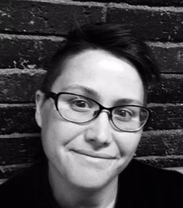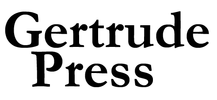|
Bioluminescent sea creatures have been on my mind a lot this week. I just finished reading M Archive: After the End of the World and in this work, bioluminescent sea creatures are a living archive of human violence and the persistence of life on earth in its aftermath.
In this second book of an experimental tryptic (preceded by the collection Spill) Alexis Pauline Gumbs, self-described “queer black troublemaker,” gives us a narrator that is picking through the rubble after the end of the world. Through quickly moving experimental prose, the book’s researcher/narrator sifts through the earth’s remains and uses the artifacts to show us what life is like during and after the world is destroyed, which is also the Black Feminist future that is already being made. In telling us how the end of the world came to be, Gumbs traces for us what we must become, what must transform, and what must be mourned. M Archive accounts for how anti-Blackness, late capitalism, and environmental destruction produce our immediate present and eventually the full evisceration of the planet and life as we currently know it. This is a book in consistent dialogue with M. Jacqui Alexander’s book Pedagogies of Crossing, a seminal work of transnationalist feminist theory, which argues the middle passage of the transatlantic slave trade is “an act of violence that continues to impact the entire planet through the indivisibility of the water, wind, earth, and fire that surround and constitute our world.”
Early in the book, the archives take us into the ocean and consider the findings of Black marine biologists who: “… suggest that there may be a causal relationship between the bioluminescence in the ocean and the bones of the millions of transatlantic dead…. what the dark scientists are saying is that now that the bones are there as fine as sand, the marrow like coral to itself, the magnesium and calcium has infiltrated the systems of even the lowest filter-feeders. So any light that you find in the ocean right now cannot be separated from the stolen light of those we long for every morning.” In short, the bones of African people thrown into the ocean during the trans-Atlantic slave trade are now in all of us through water vapor we breathe in along with air, fueling the light of deep sea creatures. Now, bioluminescent sea creatures pulsate in the edges of my visual field, a node of memory, a visual call to remember lost lives and the presence of the past. I imagine them glowing bright in the chilled depths of the ocean as the bitter cold wind blew into town. I think of them when my kid tells me she got to feed Sparkle, her class fish. M Archive is a corrective lens that allows us to see the way the world is literally constituted from the legacies of harm. It allows us to see how seemingly harmless ways of being are linked to the possible destruction of humanity, but it also shows us the skills needed to transform and survive this harm. Re-considering glowing-eyed sea creatures was just the first of many moments in which my brain broke open and was re-attuned to present conditions of this world in ways that fundamentally changed how I experience my days. With each breath, I notice there is mourning. With each preschool conversation about goldfish there is remembrance and, for me, a reminder to repent and repair. |
In telling us how the end of the world came to be, Gumbs traces for us what we must become, what must transform, and what must be mourned. Gender, sex, race, consumption, production, transportation, pollution, violence, hetero-normativity, white supremacy, are all accounted for, interrogated, and either left in the ruins or transformed. Take, for example, these excerpts from the powerful section on how people in our present create our material lives and identities constitute ourselves through the labor and abjection of fat, Black women:
“If you think you would have survived without the love of fat black women you are wrong…who works all the time while you are sleeping and hating yourself? who fixes everything you don’t know how to do? you are a liar. you are a mess. and you are allowed to be a mess because of the unending work of fat black women… even if you are a fat black woman. you’ve lied and said you weren’t or compared yourself to someone else. it’s a failure. it’s a lie from the devil. it will never work. it is killing us all. how many statues of fat black women do the ancients have to hide for you to dig up and understand what god looks like.” The first sentence of the next page after this searing condemnation begins: “This is how you prepare for a haunted planet… you go to the city of the dancing funerals and the decorated graves and you listen.” Despite the despairing evidence of how deep we are in it—in the devil and in death—the narrator moves on. There is a future. Someone prepared. Black feminist survival skills produced the tunnels and flotation devices into the future. In short, the bones of African people thrown into the ocean during the trans-Atlantic slave trade are now in all of us through water vapor we breathe in along with air, fueling the light of deep sea creatures. The second-to-last chapter is called “Baskets: (Possible Futures Yet to be Woven).” In this chapter, we are reminded that well-woven baskets can float, and a floating vessel can become a boat. The lines of each of these poems are like long strips of dried grass. In the early pages I could only see the tips flying through the air and I registered activity, the process of making:
"...and you can feel that the hands that stitched this together stitched it with love and desire, creativity and connection. they laughed sometimes when they were stitching and cried sometimes as the memories came through. they were grateful to transform each memory into love. you can feel their presence as you put the fabric on your hands. as you begin weaving now.” It was surprising and deeply joyous to see a boat emerge from the weaving; weaving that took place in poisoned water. Weaving that’s skilled enough to navigate the floods. Gumbs has been weaving her genius-skill into scholarship, art, and community for years—if you’re not following along at home, you should be. This is the best book across all genres that I’ve read in years. Read this book. It’s necessary if you’d like to build anything capable of floating in the days and years to come. |

REVIEWED BY GROVER WEHMAN-BROWN
Grover Wehman-Brown is a writer living in the hills of Western Massachusetts. Her essays have appeared online in venues such as The Establishment, The Huffington Post, and Greatist. She is currently writing a poetry manuscript that examines dyke and transmasculine ancestry. You can find out more at www.groverwehmanbrown.com.
Grover Wehman-Brown is a writer living in the hills of Western Massachusetts. Her essays have appeared online in venues such as The Establishment, The Huffington Post, and Greatist. She is currently writing a poetry manuscript that examines dyke and transmasculine ancestry. You can find out more at www.groverwehmanbrown.com.
